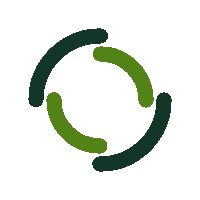This means strategically linking to related pages from other pages, and when done right, it will boost sales potential and ranking. Once you have tested your store for speed, you want to update your content and optimize your store images. So grab that coffee and follow this foolproof Shopify SEO guide to boost organic traffic.
Imagine having AI at your fingertips, ready to write formulas, clean data, and even create charts and graphics for you. With Bricks, you can transform your data into stunning visuals, like dashboards and reports, all interconnected with your documents and presentations. It’s like having your own personal spreadsheet expert, making your life easier and your work more efficient. It might seem a bit complex at first, but with a little practice, you’ll be ranking like a pro.
- Just create a billing account with Google Cloud Platform to get a $200 credit on Google Maps API every month (you won’t be charged unless the usage exceeds these $200).
- However, when a site accumulates many broken links, it can impact your rankings negatively.
- As with any PPC campaign, Ads appear on a Google Maps SERP above the organic results, usually one or two at a time.
- These platforms offer features to track keyword performance and monitor changes in your site’s visibility.
As a matter of fact, it’s no longer good enough only to optimize your content for a handful of keywords. Instead, Google wants to find out what your page is about in general. So, it will use these types of keywords to verify that your content is, in fact, about the topic. While we’ve written a lot about the importance of backlinks, you should also focus on creating internal links. An internal link is a hyperlink that links to another page on the same domain.
Happy visitors are more likely to stay on your site longer, look at more pages, and become customers—Google notices when people like a website and gives it better rankings. Be skeptical of all shortcuts to higher rankings, like paying for dofollow backlinks. To improve your Google rankings without getting penalized, learn what activities Google penalizes. In short, avoid black hat SEO techniques like keyword stuffing and link schemes. And each one is recommended by Google in its guidance on improving local rankings.
Find competitor keywords with NEW Keyword Gap
Short-tail keywords are broad terms with high search volume and high competition, such as shoes. Long-tail keywords are more specific phrases, usually containing three or more words, like best-running shoes for women. These have lower search volume but are easier to rank for and often lead to higher conversion BHS Links rates. You can use keyword research tools like Google Keyword Planner, Ahrefs, or Semrush to discover keywords related to your niche, evaluate their search volume, and assess the competition. For example, if you’re targeting the keyword how to grow tomatoes in pots, the search intent is clearly informational.
To ensure that your site continues to rank well, check if your old content is decaying — especially blog posts with dates on them. To do this, you can use Google Search Console and see which pages have lost, clicks, impressions, or rankings. Then, prioritize the posts that are losing the most traffic and start updating them. Good content has the best chance of being viral content, and Google rewards content virality heavily in its rankings algorithm.
So the first step to ranking well on Google is to determine which keyword(s) you want a page to rank for. Similarly, Google ranks web pages by relevance to search queries. And some web pages get featured in special displays like “featured snippets” and “People Also Ask” questions.
Get Google Ads hacks for free (used by our 500K customers)
No matter how much content you create to target those highly competitive keywords, you may never rank on the first page of Google. To avoid disappointment and make tangible progress, it’s wise to choose keywords that are easier to rank for, at least initially. You can use free keyword research tools like WordStream or Semrush to find relevant keywords to your industry, their search volumes, and their competitiveness. When targeting question-based keywords, it’s important to provide detailed and informative answers within your content.
With this setup, your top ranks will be visually distinct, making it easier to spot trends or exceptional performance at a glance. Conditional formatting can be particularly handy when dealing with large datasets where spotting numbers manually would be like finding a needle in a haystack. Going at it manually as your list of products – and customers – grows becomes harder and harder. With developing machine learning tech, eCommerce automation is a must if you want to compete, and SEO is no different. But, as we mentioned earlier, you don’t want to go overboard with apps, as this can slow your site, which harms Shopify SEO. Last but not least, you need the right tools and apps if you want to upgrade your Shopify SEO and rank #1 on Google.
Ever had the experience of scrolling through a long spreadsheet in Google Sheets, only to lose track of which data belongs where? Navigating spreadsheets can sometimes feel like deciphering a complex map without a compass. By locking a row, especially the header, you ensure it stays visible as you scroll down. It’s like having your own personal guide, keeping you oriented no matter how far you wander down the sheet.



Leave a reply